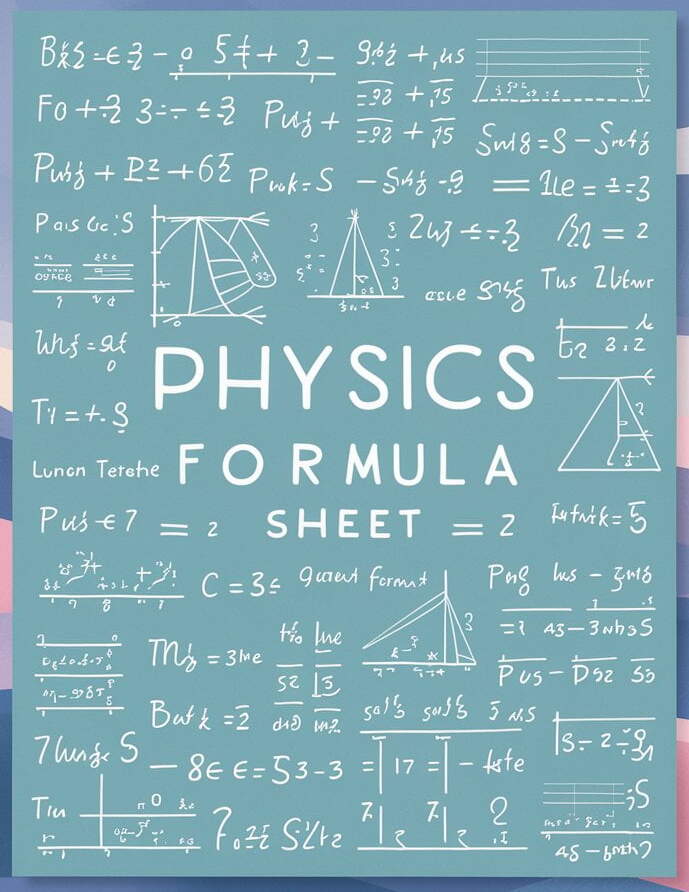Introduction
Brief Overview of AP Physics C
AP Physics C is a set of two advanced placement courses designed for high school students who are interested in pursuing college-level physics. This course is divided into two main sections: AP Physics C: Mechanics and AP Physics C: Electricity and Magnetism (E&M). Both courses are calculus-based, meaning they require a solid understanding of calculus principles to solve complex physical problems. They are typically taken by students who have a strong interest in science, technology, engineering, and mathematics (STEM) fields.
AP Physics C: Mechanics covers topics such as kinematics, Newton’s laws of motion, work and energy, rotational dynamics, gravitation, and oscillations. This course focuses on the motion of objects and the forces that cause these motions, providing students with a deep understanding of the physical principles that govern our everyday experiences.
AP Physics C: Electricity and Magnetism, on the other hand, explores the principles of electric forces and fields, electrical circuits, magnetic fields, and electromagnetism. This course delves into the behavior of electric and magnetic fields, how they interact, and how they can be manipulated in practical applications.
Interested to know more about AP Physics C exam in detail ? Check out All about AP Physics C exam
Importance of the Equation Sheet in Exam Preparation
The equation sheet provided for the AP Physics C exams is an indispensable tool for students. This sheet contains a comprehensive list of all the essential equations needed to solve the various problems presented in both the Mechanics and E&M exams. Here’s why the equation sheet is crucial for exam preparation:
- Efficiency in Problem-Solving: During the exam, time management is critical. The equation sheet allows students to quickly reference the necessary equations without having to memorize each one. This saves valuable time and reduces the cognitive load, allowing students to focus on applying the concepts rather than recalling them.
- Accuracy and Consistency: With the equation sheet at hand, students can ensure they are using the correct formulas consistently. This reduces the likelihood of errors that can occur from misremembering equations or using incorrect forms.
- Confidence Boost: Knowing that they have access to all the important equations can boost students’ confidence. This can alleviate some of the anxiety associated with high-stakes testing and help students perform better under pressure.
- Learning Aid: While preparing for the exam, students can use the equation sheet as a learning aid. By familiarizing themselves with the equations and understanding their applications, students can reinforce their comprehension of key concepts and improve their problem-solving skills.
- Strategic Studying: The equation sheet can help students identify which equations and concepts they need to focus on during their study sessions. By practicing with the sheet, students can develop a strategy for tackling different types of problems, ensuring they are well-prepared for any question that might come their way.
To download the AP Physics C equation sheet from Official Page of College Board, click here
Using the Equation Sheet Effectively
1. Familiarity with the Sheet
Being familiar with the AP Physics C equation sheet is crucial for maximizing its utility during the exam. Here are some tips on how to quickly locate equations and understand the symbols and notation used.
How to Quickly Locate Equations
- Organize by Topic: The equation sheet is typically organized by major topics such as kinematics, dynamics, energy, momentum, rotation, gravitation, electrostatics, circuits, and electromagnetism. Familiarize yourself with this structure so you know where to look for specific types of equations.
- Highlight Key Equations: Before the exam, take some time to highlight or mark the equations that you find most useful or that you use frequently. This can help you quickly find these equations during the test.
- Practice Makes Perfect: Use the equation sheet while doing practice problems. This will help you get accustomed to where each equation is located and improve your speed in finding them.
- Create a Mental Map: Visualize the layout of the equation sheet in your mind. For example, remember that kinematic equations are at the top left, while electromagnetism equations might be at the bottom right. This mental map can serve as a quick reference guide during the exam.
- Use Index Tabs: If allowed, you can use small, removable sticky notes to mark different sections of the equation sheet. This can serve as a quick reference guide to jump between sections during the exam.
- Prioritize Common Equations: Pay extra attention to equations that are commonly used across multiple problems. Being able to quickly find and apply these equations can save you time and improve accuracy.
Understanding Symbols and Notation
- Standard Symbols: Physics equations use a variety of symbols to represent different quantities. Familiarize yourself with the standard symbols and their meanings. For example:
 typically represents velocity
typically represents velocity represents acceleration
represents acceleration represents force
represents force represents mass
represents mass represents time
represents time-
 represents charge
represents charge  represents electric field or energy, depending on context
represents electric field or energy, depending on context
- Greek Letters: Many equations use Greek letters to represent certain quantities. Common ones include:
-
 (alpha) for angular acceleration
(alpha) for angular acceleration -
 (beta) for magnetic flux density
(beta) for magnetic flux density  (mu) for the coefficient of friction or magnetic permeability
(mu) for the coefficient of friction or magnetic permeability (omega) for angular velocity
(omega) for angular velocity
-
- Subscripts and Superscripts: Pay attention to subscripts and superscripts, as they can change the meaning of a symbol. For example,
 represents gravitational force, while
represents gravitational force, while  represents electric force.
represents electric force. - Units of Measurement: Make sure you understand the units associated with each quantity. This will help you ensure that your answers are in the correct units and can also serve as a check on your work.
- Vector Notation: Some equations involve vectors, indicated by bold letters or an arrow above the symbol (e.g.,
 ). Remember that vectors have both magnitude and direction, and be prepared to use vector addition or decomposition when necessary.
). Remember that vectors have both magnitude and direction, and be prepared to use vector addition or decomposition when necessary. - Derived Quantities: Recognize how some quantities are derived from others. For instance, velocity (
 ) is the derivative of position (
) is the derivative of position ( ) with respect to time (
) with respect to time ( ), and acceleration (
), and acceleration ( ) is the derivative of velocity with respect to time.
) is the derivative of velocity with respect to time. - Constants and Coefficients: Some equations include constants, such as the gravitational constant
 , Coulomb’s constant
, Coulomb’s constant  , or the permittivity of free space
, or the permittivity of free space  . Know the values of these constants and when they are used.
. Know the values of these constants and when they are used.
AP Physics C Equation Sheet: The closest thing to a treasure map in the quest for acing physics! 🏴☠️📜
Additional Resources
To further enhance your preparation for the AP Physics C exam, here are some valuable resources that provide practice exams, problems, textbooks, study guides, and online tutorials. Utilizing these resources can help solidify your understanding of the material and improve your problem-solving skills.
Links to Practice Exams and Problems
- College Board AP Central: The official College Board website offers a variety of practice exams and sample questions. These resources are designed to give you a sense of the types of questions you will encounter on the actual exam.
- Khan Academy: Khan Academy provides practice problems and exercises for both Mechanics and Electricity and Magnetism. These are great for honing your skills and testing your knowledge.
Recommended Textbooks and Study Guides
- Textbooks:
- “Fundamentals of Physics” by Halliday, Resnick, and Walker: This textbook is widely used in introductory college physics courses and covers both Mechanics and Electricity and Magnetism in detail.
- “Physics for Scientists and Engineers” by Serway and Jewett: Another comprehensive textbook that provides in-depth explanations and a variety of problems to practice.
- Study Guides:
- “5 Steps to a 5: AP Physics C” by Greg Jacobs: This guide offers a structured approach to studying for the AP Physics C exam, including practice tests and review material.
- “The Princeton Review: Cracking the AP Physics C Exam”: This study guide provides strategies for test-taking, practice questions, and detailed explanations to help you prepare effectively.
Online Resources and Video Tutorials
- YouTube Channels:
- Tutoringmaphy: Provides engaging and detailed videos on various physics topics, including AP Physics C.
- MIT OpenCourseWare: Access free course materials from MIT’s introductory physics courses. These resources include lecture notes, problem sets, and exams.
Conclusion
Recap of the Importance of the Equation Sheet
The AP Physics C equation sheet is a powerful tool that can significantly enhance your performance on the exam. It serves as a quick reference guide, allowing you to efficiently locate and apply the necessary equations to solve a wide variety of problems in both Mechanics and Electricity and Magnetism. By reducing the cognitive load of memorizing formulas, the equation sheet allows you to focus more on understanding the underlying concepts and accurately solving the problems presented to you. Its role in promoting efficiency, accuracy, and confidence cannot be overstated.
Final Tips for Effective Exam Preparation
- Practice Regularly: The more you practice with the equation sheet, the more familiar you will become with its layout and the equations it contains. Regular practice helps reinforce your understanding and improves your speed in locating and applying the correct formulas.
- Understand the Concepts: While the equation sheet is a helpful tool, it’s essential to have a solid grasp of the underlying physics concepts. Understanding how and why an equation works will enable you to apply it more effectively and solve problems more accurately.
- Work on a Variety of Problems: Expose yourself to different types of problems across both Mechanics and Electricity and Magnetism. This will prepare you for the range of questions you might encounter on the exam and help you develop versatile problem-solving skills.
- Use the Equation Sheet During Practice: Always have the equation sheet handy when practicing problems. This will help you get accustomed to using it efficiently and make it an integral part of your problem-solving strategy.
- Review Mistakes: When you do mistakes, take the time to understand and troubleshoot. Reviewing and learning from your errors will help you avoid similar mistakes in the future.
- Time Management: Practice solving problems under timed conditions to improve your time management skills. Being able to quickly reference the equation sheet and apply the right equations can save you valuable time during the exam.
- Stay Calm and Confident: Trust in your preparation and the resources available to you. The equation sheet is there to assist you, so use it confidently to support your problem-solving process.
Encouragement and Motivational Closing Remarks
Preparing for the AP Physics C exam can be challenging, but remember that every problem you solve and every concept you master brings you one step closer to success. Embrace the journey of learning and take pride in the progress you make along the way.
Trust your abilities and the hard work you have put into your preparation. The equation sheet is a valuable ally, guiding you through complex problems and helping you showcase your understanding of physics principles. Trust in your skills, stay focused, and approach each problem with confidence.
On exam day, take a deep breath and remember that you are well-prepared. You have the knowledge, the tools, and the determination to excel. Keep a positive mindset, and let your dedication shine through. Success is within your reach, and with perseverance and the right strategies, you will achieve your goals.
Frequently Asked Questions (FAQs)
Q. Is there an equation sheet on AP Physics C?
Yes, there is an equation sheet provided for the AP Physics C exam. The College Board supplies this sheet during the exam to help students reference important equations without needing to memorize them. This sheet includes a comprehensive list of equations that are relevant to both sections of the exam: Mechanics and Electricity & Magnetism (E&M). Familiarizing yourself with this sheet beforehand can significantly improve your efficiency and accuracy during the test.
Q. Is there an equation sheet on AP Physics C Mechanics?
Yes, the AP Physics C: Mechanics section has its own dedicated part of the equation sheet. This section includes equations pertinent to various topics within mechanics, such as:
- Kinematics: Equations of motion for uniformly accelerated motion.
- Newton’s Laws: Equations involving force, mass, and acceleration.
- Work and Energy: Equations for kinetic energy, potential energy, and work-energy theorem.
- Momentum: Equations for linear momentum and impulse.
- Rotation: Equations for angular displacement, angular velocity, angular acceleration, and torque.
- Gravitation: Equations for gravitational force and potential energy.
To know more about the AP Physics C : Mechanics, check out AP Physics C Mechanics
Q. Is there an equation sheet on AP Physics C E&M?
Yes, the AP Physics C: Electricity & Magnetism (E&M) section also has its own portion of the equation sheet. This section includes equations relevant to topics such as:
- Electrostatics: Equations for electric force (Coulomb’s law), electric field, and electric potential.
- Conductors, Capacitors, and Dielectrics: Equations for capacitance, charge, and electric energy storage.
- Electric Circuits: Ohm’s law, Kirchhoff’s laws, and equations for resistors and capacitors in series and parallel.
- Magnetostatics: Equations for magnetic fields due to currents (Biot-Savart law, Ampere’s law).
- Electromagnetism: Faraday’s law of induction, Lenz’s law, and equations involving inductance.
To know more about the AP Physics C : E&M, check out Succeeding in AP Physics C Electricity and Magnetism




